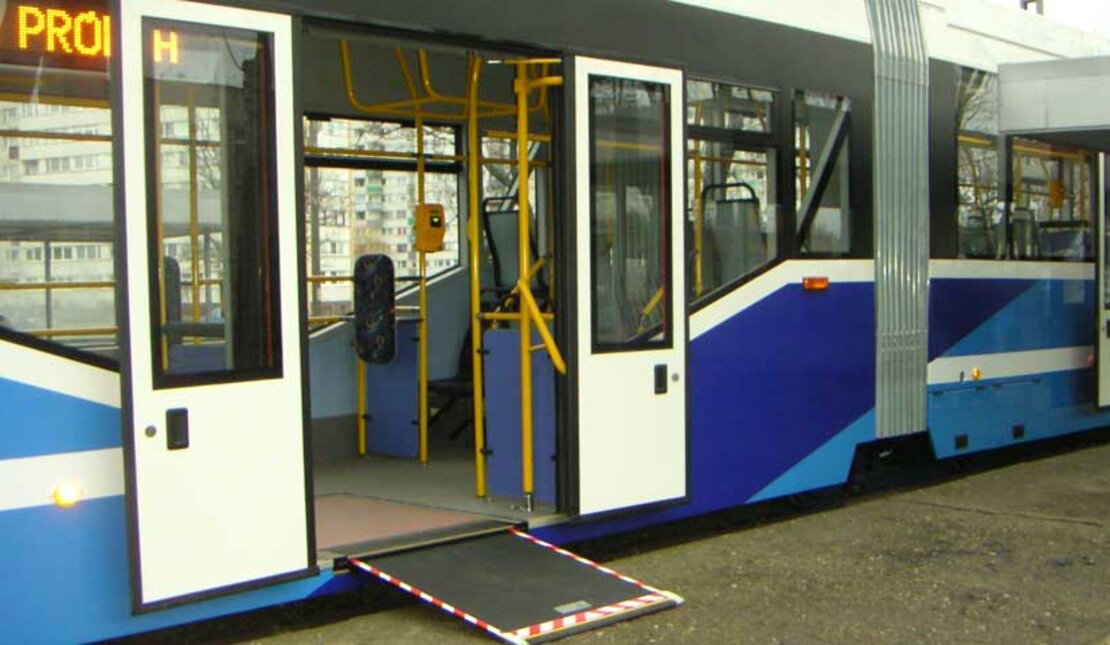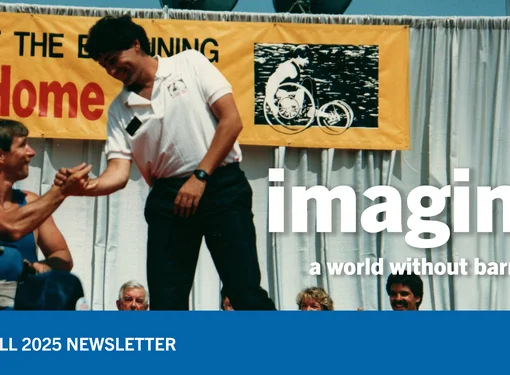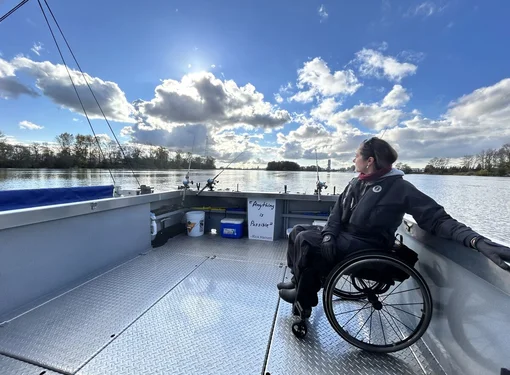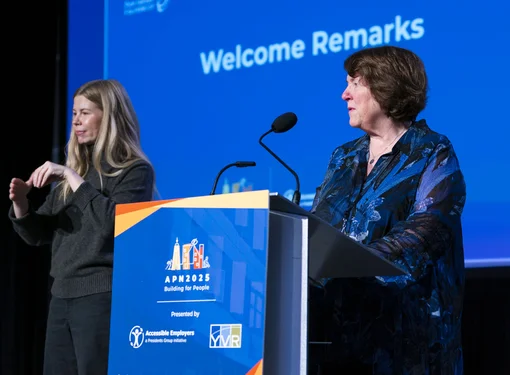Challenges and triumphs of accessible transportation
Above photo: A ramp deployed from an accessible light rail train. (credit: Wikimedia Commons)
On the 20th of December, the Passenger Transportation Board of British Columbia approved 20 accessible taxicab licenses for Vancouver. While there are concerns raised about whether this will be enough, this is seen as a big victory since it helps complement the existing HandyDART (para-transit) service.
In the past, there had been issues with providing basic accessible transportation in the city. Today, the Vancouver region offers accessible features on all of its buses, SkyTrain stations, and SeaBus vessels. However, even with this impressive collection of services, there are still lingering issues. These issues are not exclusive to Vancouver – they can happen in any city and serve as further proof that full accessibility takes constant effort to achieve.
So how is accessible transportation still an issue for a place where every service offers accessibility features?
Accessible bus stops
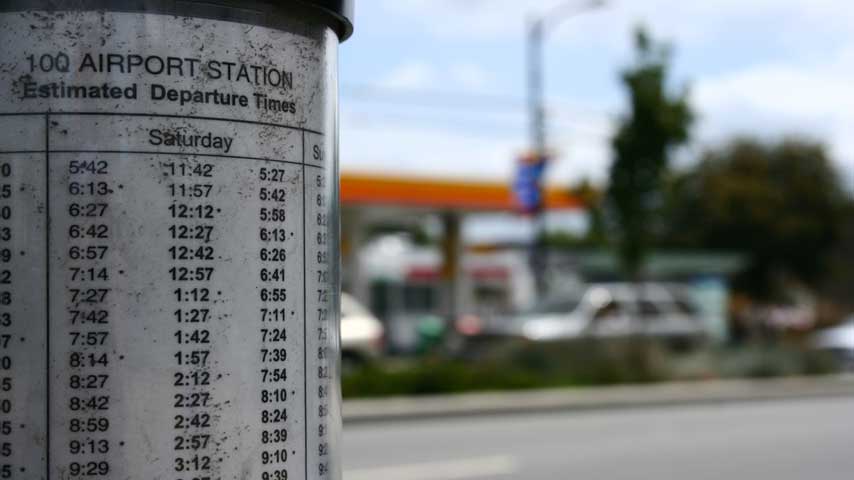
Above photo: A typical bus stop.
One of the biggest challenges to implementing a fully accessible system is ensuring that all bus stops are accessible. Even though the buses themselves may have ramps and other accessibility features, not all bus stops are created equal. Every sidewalk is different, depending on the part of town (downtown commercial area vs. residential area) and type of area (urban vs. suburban).
An accessible bus stop needs more than space for a ramp – it also needs space for a wheelchair or person to be able to maneuver at the end of the ramp. This is why two metres of sidewalk space is often recommended (and is actually part of the accessibility laws in Ontario).
Obviously this gets tougher in urban downtown areas, but it can also get challenging for places that already have existing sidewalks or pathways. This is due to the need for modifications (often expensive).
Priority seating
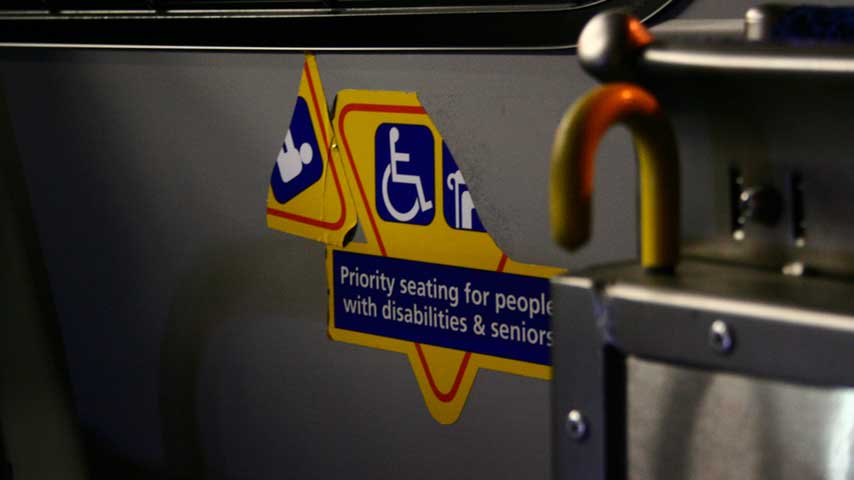
Above photo: A sign reminding passengers of priority seating.
Even with accessible features on buses, they cannot function completely if there is no sense of courtesy or regulations enforcing who has access to the priority seating on board.
In Britain, there is a constant debate around this issue, particularly about whether baby strollers have priority over wheelchair users in those spots and whether regulations can be introduced to enforce the rules of priority seating.
Advocates say the primary problem with accessible public transportation in Britain is that those with baby strollers frequently refuse to move for wheelchair users, and they argue that wheelchairs have priority over strollers in those spaces.
However, when this issue was brought up, it was ruled that neither strollers nor wheelchairs had priority over the other, meaning that there would be no rule to enforce.
Because this is an accessibility barrier caused not by physical constructs but rather by society, this has been a hot topic among the British accessibility community, particularly in the past few years – this situation adds fuel to the idea that attitudes shape the experience of disability more than physical ability.
Recently, The Independent did an experiment on what it is like to travel around Britain in a wheelchair on public transport.
This is an ongoing battle in that country and clear evidence of how accessibility features need to have cooperation by both its operators and users for them to be useful.
Para-transit scheduling
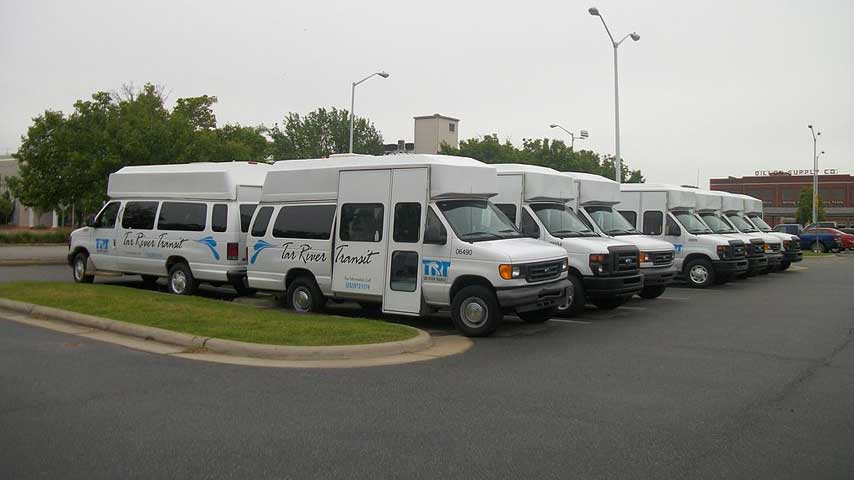
Above photo: A fleet of para-transit vehicles. (credit: Wikimedia Commons)
For many cities, there are para-transit services for those with disabilities who are otherwise unable to take public transit without assistance. These services usually have staff specially trained to handle people with accessibility challenges and can pick up and drop off directly at residences.
However, this "door to door" service has its drawbacks.
One of the biggest concerns involves scheduling. Because this service has to be as financially sustainable as possible, routes are planned to pick up and service as many people in one trip as possible. This requires trips to be arranged well ahead of time – in many cases, at least 24 hours ahead.
This places constraints on what the passenger is able to do. For example, if you had to take para-transit to work but was invited to a post-work dinner, you may not be able to attend – para-transit scheduling does not allow for spontaneous events. Another example may be a last-minute errand – you may have to find an alternative non-para-transit ride home.
While a fully accessible public transit fleet can help for those who are still able to take it, it may not be an option since not everyone can take buses or trains independently without assistance.
Cost of operating para-transit
Para-transit costs more per ride to operate than convention buses or trains. There are many reasons for this, including the necessity of picking up passengers at specific points such as homes (rather than a common point like a transit terminal), having specially trained staff, carrying fewer passengers per ride (due to vehicle constraints), and so forth.
The vehicles may cost a bit more due to their specialized nature, and may experience additional maintenance costs as well.
This can prevent many public transit agencies from expanding their para-transit programs and is a big reason why para-transit systems around the country are often underserved.
Taxicabs
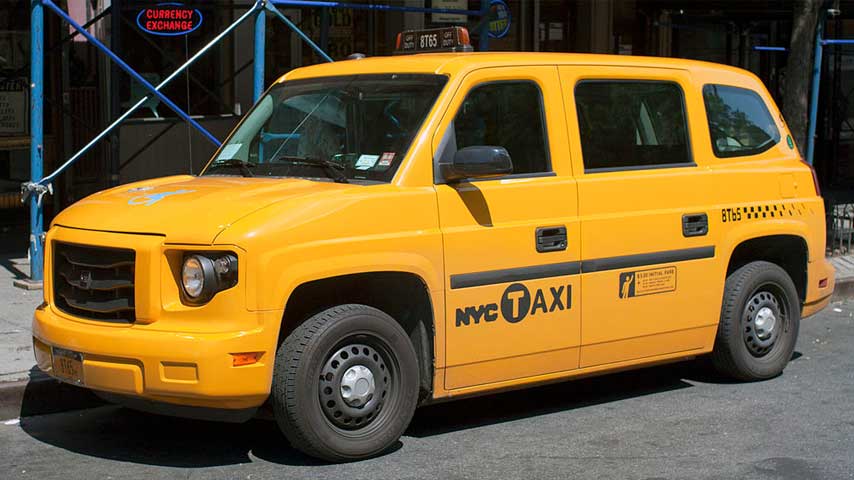
Above photo: An accessible taxicab in New York City. (credit: Wikimedia Commons)
One of the attempts that Vancouver has made to compensate for para-transit scheduling challenges is the TaxiSaver program.
The program essentially gives a discount for taxicab rides for those who are eligible to take para-transit. Those who cannot schedule a para-transit ride for whatever reason have the option of using those discounts to get an accessible cab to their destination.
This is a huge advantage for those who often have last-minute plans, an active social life, or require flexible scheduling. (Accessible taxicabs are also often used for those with heavy luggage or cargo that can be rolled on board rather than lifted.)
While this program is extremely valuable, it has its challenges.
The first issue lies with the fact that not all taxicabs are accessible. There are constant efforts to change this, but the costs of accessible taxicabs are often high. In addition, many regulatory barriers remain, such as a limit on how long the taxicab can legally be in operation before needing to be retired. (In many places, it is not a very long time and does not take into consideration whether the taxicab and its accessibility features are still functional.)
Another problem is with the drivers. Unlike para-transit staff, taxicab drivers are not always trained to handle passengers with accessibility challenges. While most of them may mean well, they may not be familiar with certain disabilities, which can result in safety issues.
What solutions are there?
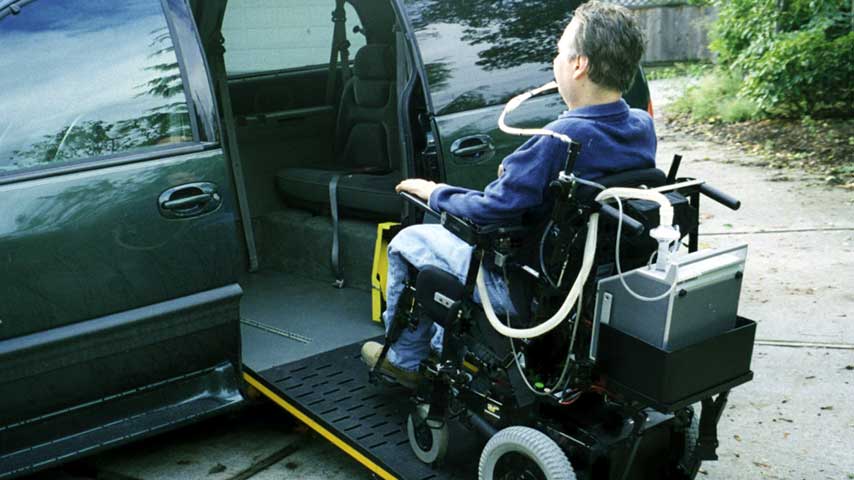
Above photo: An example of an accessible vehicle.
Having a system that is accessible for all disabilities and conditions is an extreme challenge, but we can always try to improve.
Having regulations for sidewalk width can help with bus stop accessibility. Due to the vast scope of this, it would not happen overnight and may require years and even decades for every place to be compliant. However, there was also a time in the past when having all buses with wheelchair ramps was thought to be an impossible task, so anything can happen!
Reducing costs for para-transit can be combated by having a more accessible society overall that can suit people with disabilities. In addition, automotive companies can help find ways of building cheaper accessible vehicles, reducing the massive costs associated with today's accessible car and van models – this means not only cheaper para-transit vehicles but also cheaper private vehicles for those who are able to drive but could not afford to buy cars, which can also reduce strain on para-transit systems.
Cheaper car manufacturing costs can also help a taxicab industry that is intimidated by the costs of accessible vehicles. In addition, having well trained drivers can improve safety; with more accessible taxicabs, there may be more passengers with accessibility needs, which can give drivers some valuable experience in this field.
